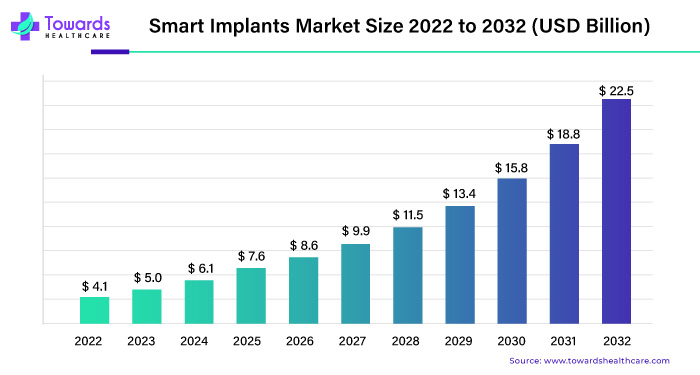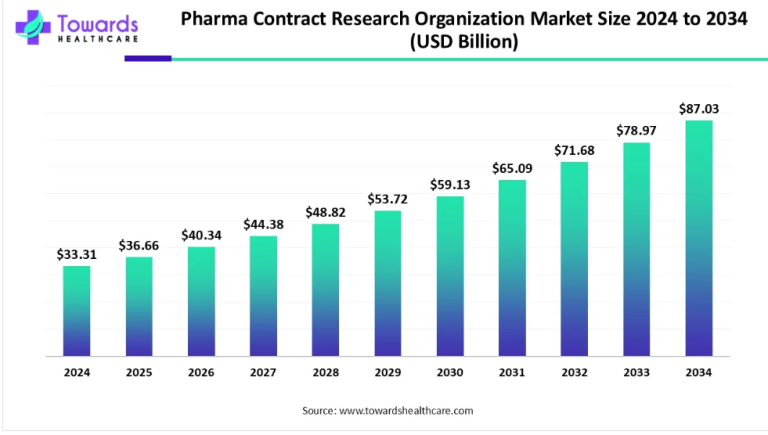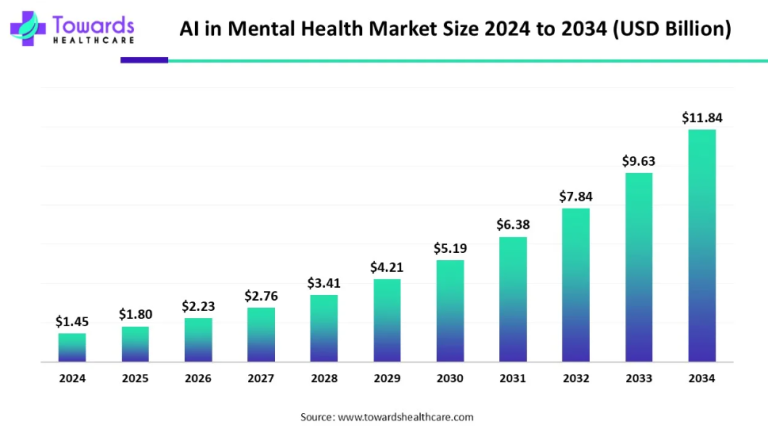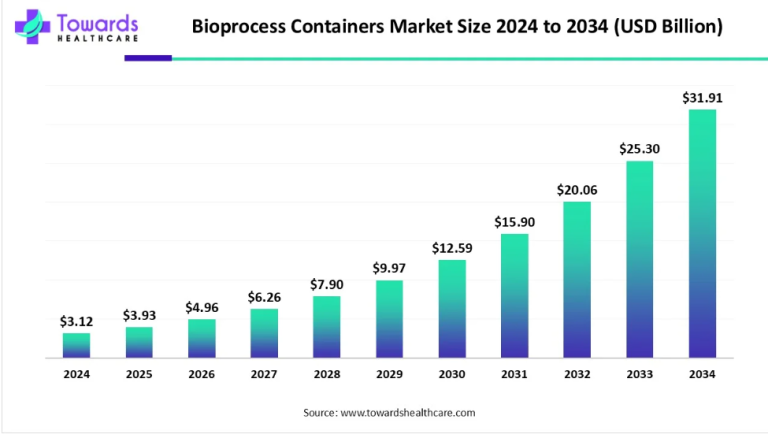
The global smart implants market has been steadily expanding over the past decade, driven by advancements in technology and the increasing demand for innovative healthcare solutions. In 2022, the market was valued at USD 4.1 billion, and it is estimated to reach a staggering USD 22.5 billion by the year 2032. This remarkable growth is projected to continue, with a CAGR of 18.2%.
For any queries, feel free to reach us @ https://www.towardshealthcare.com/personalized-scope/5097
Understanding Smart Implants
Smart implants, also known as “bioelectronics” or “neuroelectronics,” are biomedical devices that are embedded into the human body to monitor, stimulate, or control physiological functions. These implants utilize cutting-edge technologies such as sensors, actuators, and wireless communication to provide real-time data and facilitate remote monitoring by healthcare professionals.
Key Features and Benefits
- Real-Time Monitoring: Smart implants continuously monitor vital signs and biomarkers, enabling early detection of health issues.
- Remote Connectivity: Patients and healthcare providers can access data remotely, facilitating timely interventions and personalized care.
- Improved Patient Outcomes: By optimizing treatment strategies based on real-time data, smart implants can enhance patient outcomes and quality of life.
- Minimally Invasive: Many smart implants are designed to be minimally invasive, reducing the risk of complications and improving patient comfort.
Market Drivers
Several factors are driving the growth of the global smart implants market:
Technological Advancements
- Miniaturization: Advances in microelectronics have enabled the development of smaller, more discreet implantable devices.
- Wireless Connectivity: The integration of wireless technologies such as Bluetooth and Wi-Fi allows for seamless data transmission and remote monitoring.
- Artificial Intelligence: AI algorithms enhance the functionality of smart implants by analyzing complex datasets and providing actionable insights.
Increasing Prevalence of Chronic Diseases
The rising prevalence of chronic conditions such as diabetes, cardiovascular diseases, and neurological disorders has created a growing need for innovative medical solutions. Smart implants offer a promising approach for the management of these conditions, allowing for continuous monitoring and personalized treatment strategies.
Aging Population
As the global population continues to age, there is an increasing demand for healthcare services and medical devices. Smart implants address the unique healthcare needs of elderly patients by providing continuous monitoring and early intervention, thereby reducing the burden on healthcare systems.
Shift Towards Value-Based Healthcare
In an era of value-based healthcare, there is a growing emphasis on improving patient outcomes while reducing healthcare costs. Smart implants support this paradigm shift by enabling proactive management of chronic conditions, reducing hospital readmissions, and minimizing healthcare expenditures.
Market Challenges
Despite the promising growth prospects, the global smart implants market faces several challenges:
Regulatory Hurdles
The regulatory approval process for medical devices can be lengthy and complex, delaying market entry and increasing development costs. Manufacturers must navigate stringent requirements set forth by regulatory agencies such as the FDA and EMA to ensure product safety and efficacy.
Data Security and Privacy Concerns
The widespread adoption of smart implants raises concerns about the security and privacy of patient data. Healthcare organizations and device manufacturers must implement robust cybersecurity measures to safeguard sensitive information from unauthorized access and cyber threats.
Reimbursement Issues
The reimbursement landscape for smart implants varies across different healthcare systems and insurance providers. Achieving reimbursement approval can be challenging, particularly for innovative technologies with limited clinical evidence. Manufacturers must demonstrate the cost-effectiveness and clinical utility of their products to secure reimbursement coverage.
Future Outlook
Despite these challenges, the future outlook for the global smart implants market remains highly promising. Continued investments in research and development, coupled with advancements in technology and regulatory frameworks, will drive innovation and market growth. By harnessing the power of smart implants, healthcare providers can revolutionize patient care and improve health outcomes on a global scale.
The global smart implants market is poised for exponential growth, fueled by technological innovation, demographic trends, and evolving healthcare paradigms. As the market continues to expand, stakeholders must collaborate to overcome challenges and unlock the full potential of smart implant technologies in transforming healthcare delivery.
Market Segments
By Application
- Cardiac Rhythm Management
- Orthopaedic Surgery
- Neuromodulation
- Hearing
- Others
By Implant Type
- Orthopaedic Implants
- Cardiac Implants
- Brain Stimulators
- Spinal Cord Stimulators
- Cochlear Implants
- Others
By End User
- Hospitals and Clinics
- Specialty Centers
- Ambulatory Surgical Centers
By Geography
- North America
- Europe
- Asia-Pacific
- Latin America
- The Middle East and Africa
To own our advanced study @ https://www.towardshealthcare.com/price/5097
Access our Premium Real Time Data Intelligence Tool, Visit: www.precedencestatistics.com
Read More Snapshots of Smart Implants Market



